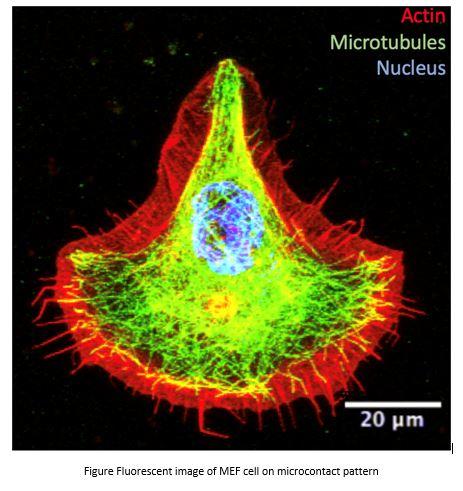In-vivo study of Yielding and Post-yielding behavior of Cytoplasm and its linkage with the cytoskeleton
Cytoplasm, as an omnipresent component of the cells, is known to have finite Young’s modulus and resists deformation, while intracellular cargo transports as fast as micron per second is observed in cytoplasm, thus it must exists a transition from solid to liquid, so called yielding and post yielding behavior of the cytoplasm. We find that cytoplasm yields at 10^1 Pascal scale. The post yielding behavior may be modelled as non-Newton fluid. Further control experiment illustrates that both heterogeneity and microtubules significantly contribute to the yielding behavior: The resistance of cytoplasm has multiple resources, and the dynamic assembling and dissembling of the microtubules are essential for yielding. Also, the cytoplasm close to microtubule-organizing centre (MTOC) has higher resistance towards yielding. Our experiment can potentially enhance people’s understanding towards cargo transport and cell mechanics.

Studying the interplay between cytoskeleton filaments and cytoplasmic properties
The cytoplasm is the major component of live cells by volume, and its mechanical property plays a critical role in cell bioactivity, including mitosis, migration, and cargo transport. There is a constant interest in understanding the cytoplasm of a live cell from a mechanical perspective. It is known that the cytoskeleton network dominates the mechanical property of the cytoplasm. Cytoskeleton is an interpenetrating network composed of three filaments: F-actin, intermediate filament, and microtubules. In Weitz lab, we combine active microrheology with live cell imaging techniques to directly quantify the deformation of the cytoskeleton networks under load to better understand each filament's role and their interactions. Our research interest covers phase behavior, microrhoelogy, superresolution imaging and filament dynamics.

